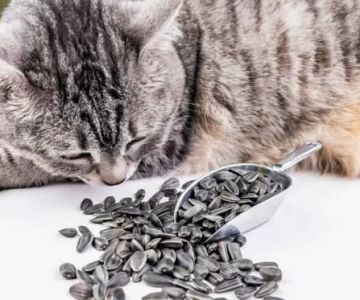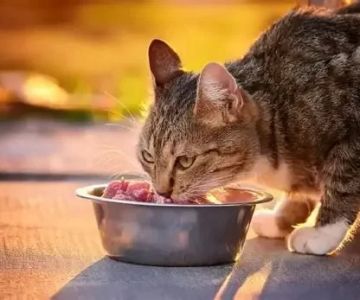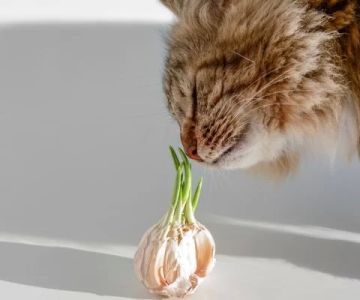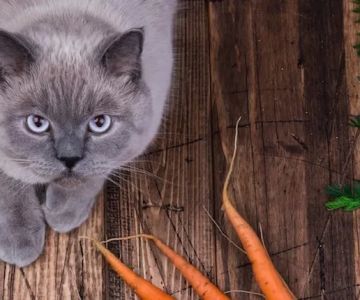Understanding Your Pet's Dietary Needs
php-template复制As a pet owner, one of the most important responsibilities you have is understanding your pet’s dietary needs. I’ve learned through my own experience and research that pets, whether dogs, cats, or other animals, have very specific nutritional requirements that can vary based on their age, breed, health status, and activity level. A healthy diet can not only improve their quality of life but also contribute to a longer, happier one. Let me take you through my journey of discovering what’s best for my pets and how you can apply that knowledge to give your own pets the healthiest diet possible.
1. Why Pet Nutrition is Crucial
When I first adopted my dog, Max, I didn’t realize how much his diet could affect his health and behavior. I simply picked up the first bag of dog food I saw, assuming it would be fine. But Max started showing signs of lethargy and digestive issues, which made me question the quality of the food I was giving him. After consulting with my vet, I learned that pet food is not a one-size-fits-all situation. Just like us, pets need a well-balanced diet tailored to their specific needs.
Pets have different nutritional needs at different stages of their lives. Puppies and kittens require more protein and fat to support their rapid growth, while senior pets need fewer calories to maintain a healthy weight. Choosing the right pet food is crucial to prevent obesity, allergies, and other health issues. This is why understanding their dietary needs is essential.

1225 Warren Ave, Downers Grove, IL 60515, USA
See Details2. Key Components of Pet Food
In my quest to find the best food for Max, I learned about the different components that make up a healthy diet for pets. Here are the key elements to consider when choosing the right food for your pet:
- Protein: Protein is a critical building block for pets. It supports muscle growth and helps in the repair of cells. Dogs, in particular, require animal-based proteins like chicken, beef, and fish. Cats, being obligate carnivores, require even higher amounts of protein in their diet to thrive.
- Fat: Fats provide energy and essential fatty acids. They help with the absorption of vitamins and keep the skin and coat healthy. Omega-3 and Omega-6 fatty acids are particularly important for reducing inflammation and supporting brain function.
- Carbohydrates: While not essential, carbohydrates can provide fiber, which helps with digestion. In addition, complex carbohydrates such as sweet potatoes and brown rice provide a steady source of energy.
- Vitamins and Minerals: These are essential for overall health. Vitamins like A, D, E, and K support immune function, while minerals such as calcium and phosphorus are critical for bone health.
- Water: Hydration is just as important as food. Pets need access to fresh water at all times to maintain healthy bodily functions.
3. How to Choose the Right Pet Food
When I first started researching pet food, I quickly became overwhelmed by the sheer number of options available. Here are the steps I followed to choose the best food for Max, and that I recommend to anyone else looking to improve their pet’s diet:
- Consult with Your Vet: The first thing I did was speak to my vet. They assessed Max’s health, age, and activity level to recommend a food that would meet his specific needs. If your pet has allergies, sensitivities, or other health issues, your vet will be your best resource in choosing the right food.
- Check the Ingredients: When choosing food, look for high-quality protein sources as the first ingredient. Avoid foods that list fillers like corn or soy as the primary ingredients, as they don’t provide much nutritional value.
- Consider Life Stage and Breed: Pets have different nutritional needs at different stages of life. Puppy food, for example, is formulated with higher protein content to support growth. Senior dog food is often lower in calories but higher in fiber to aid digestion.
- Look for AAFCO Certification: The Association of American Feed Control Officials (AAFCO) sets nutritional standards for pet foods. I always look for the AAFCO label on the packaging, which guarantees that the food meets essential nutritional standards.
4. Special Dietary Needs for Pets
During my experience, I’ve learned that some pets may require special diets due to health conditions or sensitivities. For example, pets with kidney disease might need a low-protein diet, while pets with food allergies may benefit from grain-free or limited ingredient foods. In Max’s case, he developed a slight sensitivity to chicken, and switching to a lamb-based food helped resolve the issue.
If your pet has a specific health condition, I highly recommend working with your vet to find the best food. There are also prescription diets available that are formulated for pets with specific medical needs, like weight management or joint health.
5. The Best Pet Foods for Various Pets
As someone who’s been through this process, I can share my top picks for pet foods based on different pet needs:
- For Dogs: I’ve found that brands like Blue Buffalo and Royal Canin offer excellent options for dogs of all sizes and life stages. They focus on high-quality protein and balanced nutrients.
- For Cats: Cats have unique dietary needs, and brands like Hill’s Science Diet and Wellness are top-rated for their high-protein, meat-based formulas.
- For Sensitive Stomachs: If your pet has digestive issues, brands like Natural Balance and Merrick offer formulas designed for sensitive stomachs and food allergies.
6. Monitoring Your Pet's Health
After you’ve chosen the right food for your pet, the work doesn’t stop there. It’s important to monitor their health and adjust their diet as needed. I regularly check Max’s weight and coat condition to ensure that his food is meeting his needs. Regular vet visits are also essential to keep track of any changes in their health that may require a change in diet.
If you notice your pet gaining weight, losing fur, or showing signs of discomfort after meals, it may be time to revisit their diet. In Max’s case, after switching foods, I saw a noticeable improvement in his energy levels and coat quality, which reassured me that I was on the right track.
Conclusion
Understanding your pet’s dietary needs is one of the best ways to ensure their health and happiness. Whether you’re feeding a dog, cat, or any other pet, providing them with the right food tailored to their age, breed, and health status is key. I’ve learned that no one knows your pet better than you, and by closely observing them and working with your vet, you can make informed decisions that will have a lasting positive impact on their life.










